
The painting above by British artist Simeon Solomon pictures the famed ancient lyric poetess Sappho (on the right with the laurel leaf crown) with another ancient poetess Erinna. They are posed in an intense embrace on a bench in a garden in Mytilene, the ancient capital of Lesbos. Is this “lesbian” love or the ardor of one female artist/muse for another? What is Solomon striving for here? Little is known of both poetesses lives but we do know that Erinna lived a few hundred years after Sappho and Errina was definitely not from the island of Lesbos. In the painting there is a statue of Aphrodite near Sappho, as well as her lyre. The palette is muted, feminine, roses abound. Sappho embraces Errina passionately as a lover and as a fellow poetess. This gorgeous painting adds romantic fodder to the mystique around the great poetess Sappho. Simeon Solomon was himself a closeted homosexual who was later jailed for attempted sodomy.
Please read my previous blog post “Part One – Sappho’s Songs” to learn more about Sappho’s remarkable lyric poetry. Sappho is the woman /the heroine / the artist I am currently studying as part of the “My Heroines” project. Here I have been researching ancient women heroines. I immerse myself in these women’s stories and representations in texts, writings, paintings, sculpture and critical discourse. I then reimagine and revise these figures in my own visage in performative still photographs that I have made and will continue to make with my collaborator photographer Luis Branco. Over the last year we have manifested Eve, Salome, Aphrodite and Helen of Troy in my sixty-something year old form in images that are weird, powerful and sometimes funny. You can see some of these performative works on my previous blog posts and also on Instagram https://www.instagram.com/sherrywigginsart/. In October (very soon) I will return to the residency at OBRAS Holland to work with Luis on the embodiment and performance of the great poetess Sappho and also the biblical heroine Judith (I will write more about Judith later).
The Jacques-Louis David painting above portrays Sappho with another one of her mythological lovers Phaon. Aphrodite/ Venus’s loyal messenger Cupid accompanies them. According to the ancient myth Phaon was a ferryman who served the isle of Lesbos. He was supposedly old and ugly when Aphrodite came to his boat in the disguise of a croan. Phaon ferried her across the waters and would take no payment. Aphrodite was grateful and gave Phaon a special ointment in payment. When he rubbed himself with the ointment Phaon became young and very handsome. In the subsequent story Sappho, as an older woman, had an intense love affair with the beautiful young Phaon. However, Phaon eventually grew to resent her and rejected her love. Sappho was so heart broken that she decided to throw herself in the sea to either cure herself of the love affair or die. Thus the idea of the “Leucadian Leap”. According to this ancient legend, Sappho did die.
Mythical stories, paintings, performances and writing about Sappho (who lived during the time 630 – 570 BC) abound throughout the millennia along with the adoration of Sappho’s songs. Everyone loves Sappho but whom did she love? Did she love men? Did she love women? Or both? And why has this legend that Sappho committed suicide by jumping off the Leucadian cliffs persisted throughout the ages? In the late 19th and early 20th century there was a major resurgence of interest in Sappho amongst artists and poets as well as an exploration and acknowledgement of Sappho’s love of women. In fact, the word “lesbian” (which in previous times meant someone who came from the island of Lesbos) came to be used to describe the homosexual love and sexual relationships between women. Sappho and “sapphism” became a part of the cultural dialogue even when homosexual men were being persecuted and jailed (think Simeon Solomon, Oscar Wilde and others). Operas and plays with Sappho as the main character abounded. Sappho also came to the fore amongst lesbian artists and poets—there were the famed gatherings in Natalie Barney’s home in Neuilly, France where women dressed in Greek togas and danced around the garden. In the late 20th and early 21st century the term “sapphism” has also become an umbrella term describing the attraction or relationships between women—whether they identify as lesbian, bi, pan, asexual, trans or queer. Sappho is one of our most famous queer icons.
Above and following are some of my favorite 19th and early 20th century paintings and portrayals and performances of Sappho.


I too have come to Iove Sappho—both her songs and all her mythical manifestations throughout the ages. I am excited (and nervous) about my project with the great poetess. I am traveling to the OBRAS Artist Residency in Renkum, Holland (where I worked on the project THE UNKNOWN HEROINE in 2019) in a few weeks to work on performing and embodying the great poetess with my collaborator photographer Luis Branco. Wish me luck.


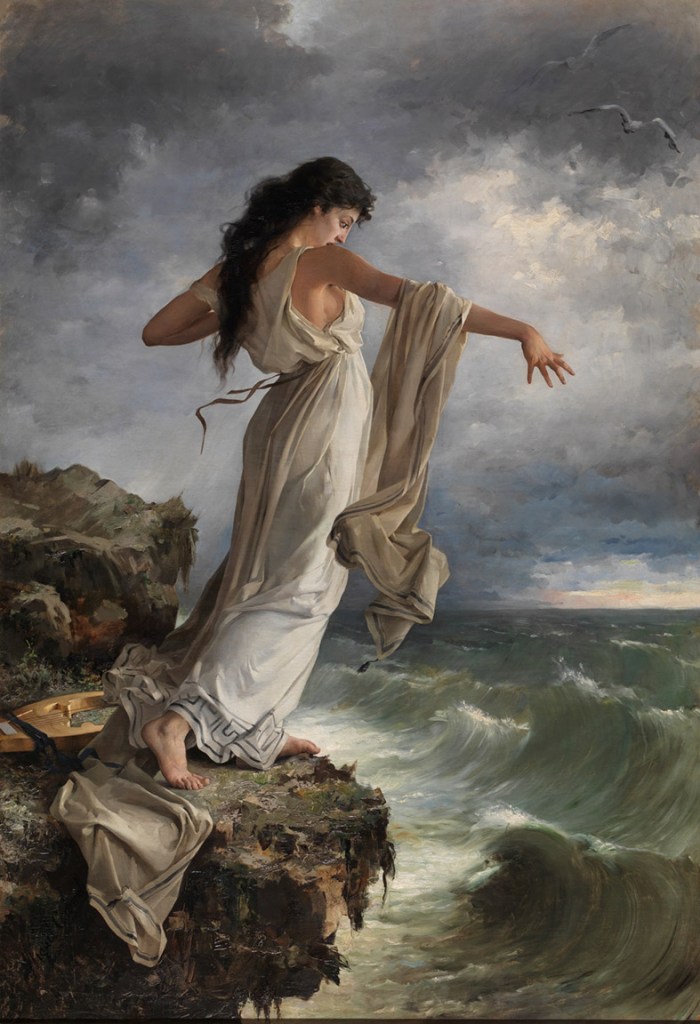
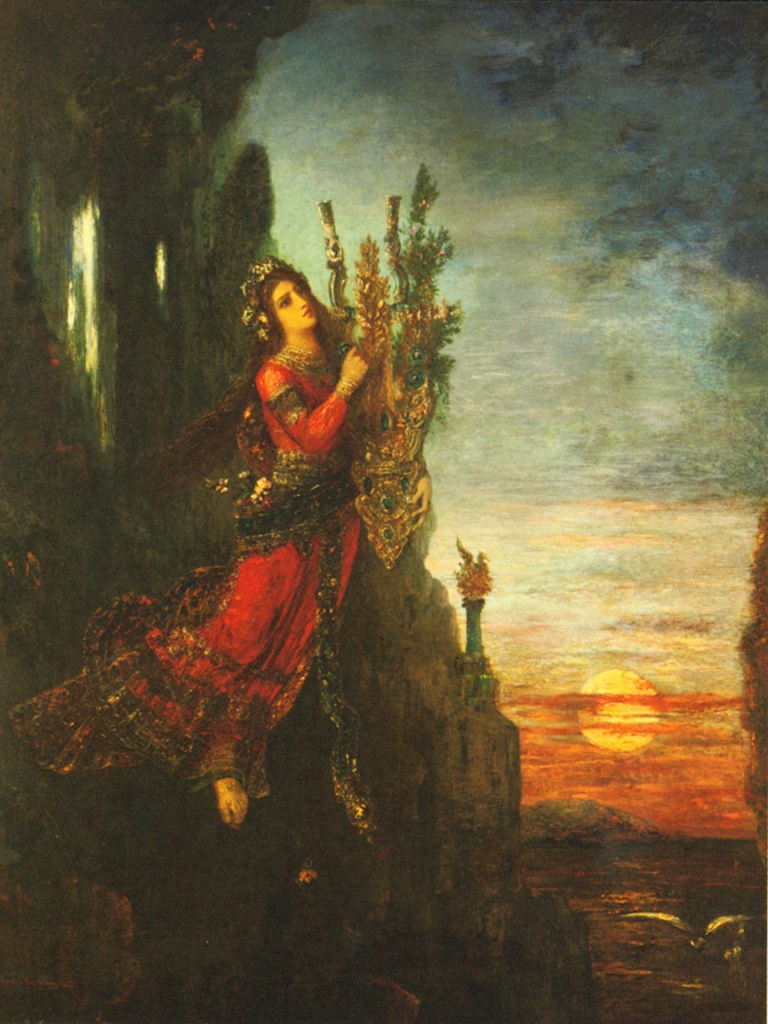
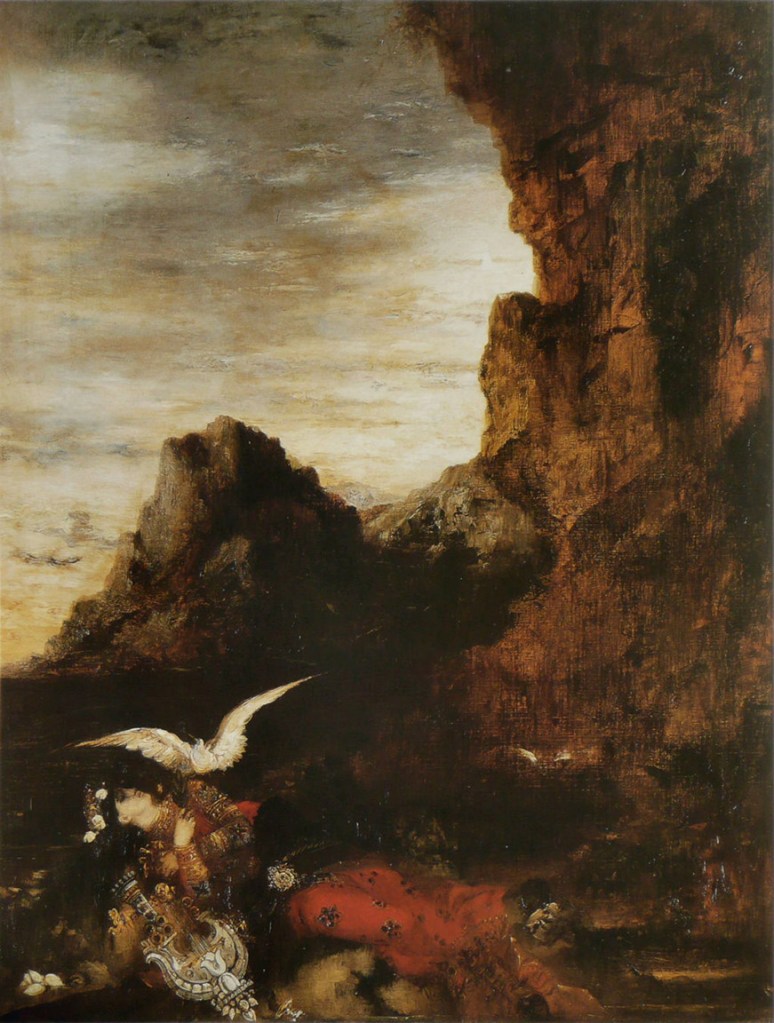
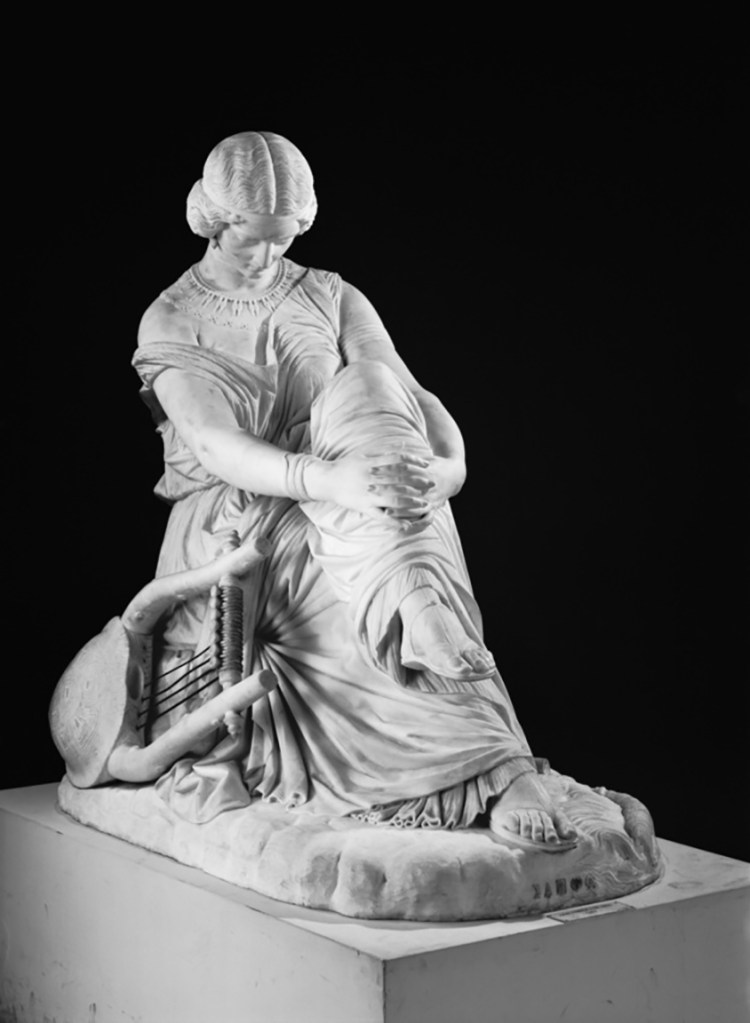


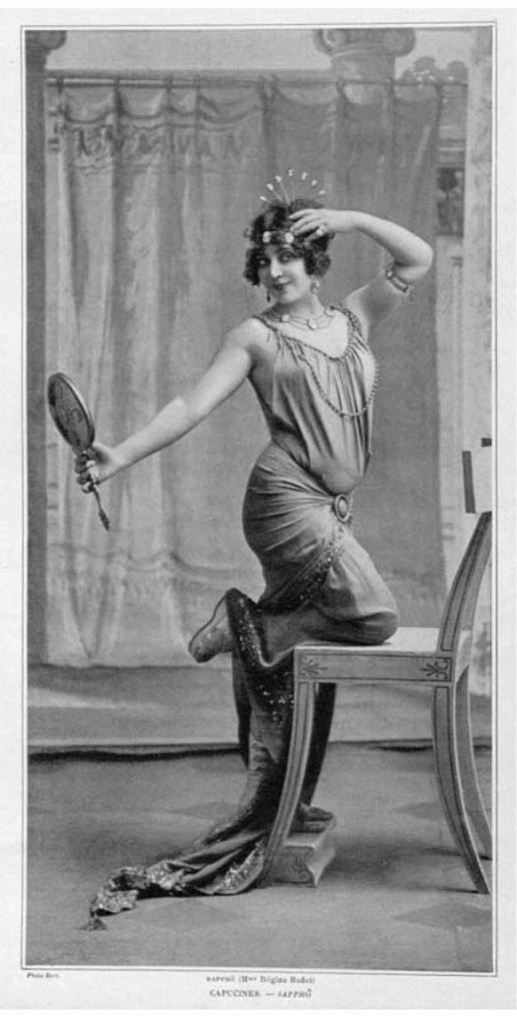
Terrific Sherry. Thanks for this. I now understand a bit. Suzie
LikeLike
Great!! xo Sherry
LikeLike